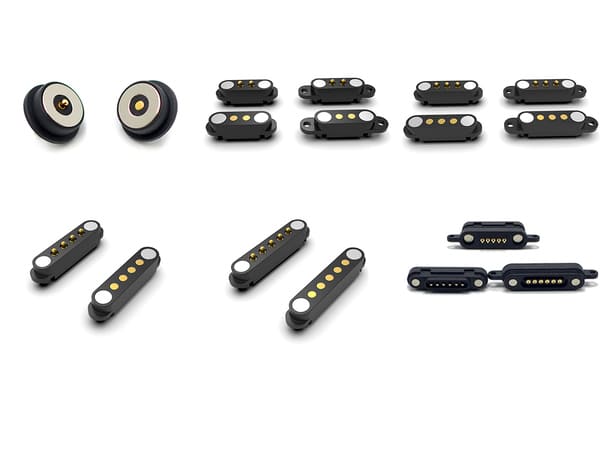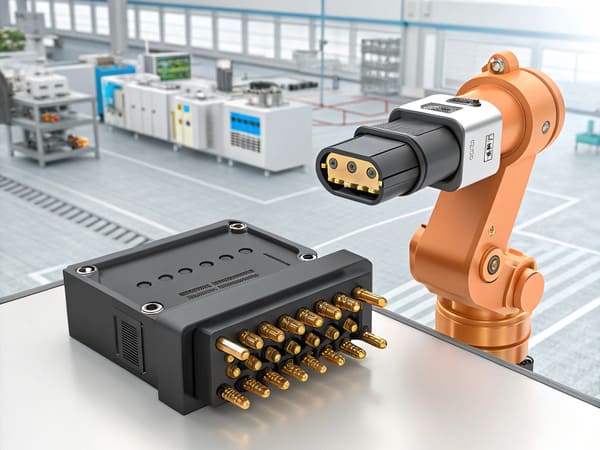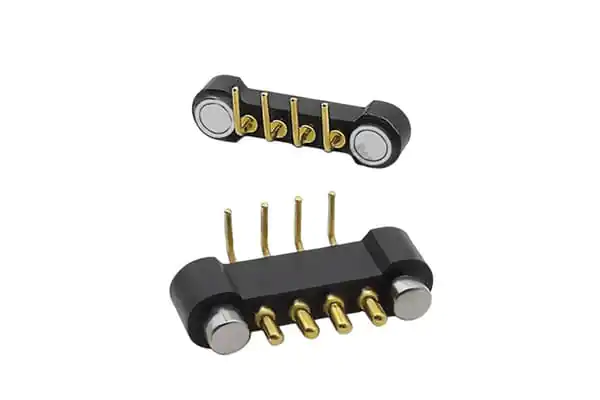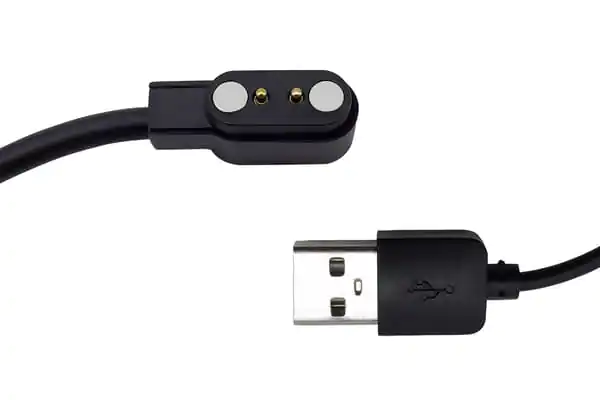Imagine charging your device in a snap with a satisfying click.
Magnetic pogo pins bring this convenience to life – but how do these small connectors manage to combine magnetism and electricity so effortlessly?
This technology has been developed to blend everyday ease with robust reliability, making it suitable for a wide range of applications.
Magnetic pogo pins work by integrating spring-loaded contacts with magnetic alignment to ensure secure electrical connections.
The magnets enable precise positioning, while the compressed springs provide consistent contact pressure.
This design supports fast, reliable connections for devices like smartwatches and electric vehicle chargers, facilitating efficient power transfer and data communication in various applications.
For pogo pin buyers seeking durability, this dual-action design ensures consistent performance even under extreme conditions.
While the basic concept seems simple, the engineering behind these connectors involves carefully balanced mechanics and material science.
Let’s dissect their operation across three key aspects.
What Role Do Magnets Play in Pogo Pin Functionality?
Magnets play a crucial role in enhancing pogo pin connectors.
They improve alignment and connection stability, transforming how these components function in various applications.
To understand the role of magnets in pogo pin functionality, note their impact on efficiency and reliability.
Magnets enable self-aligning connections, reducing setup time by up to 68% compared to traditional USB ports.
They also maintain connection integrity under vibration, minimizing accidental disconnections.
This design ensures secure and swift mating in devices, especially in environments with movement or stress.
This unique mechanism sets magnetic pogo pins apart from standard connectors.
Let’s explore how this magnetic-geared system further enhances performance in practical scenarios.
The Magnetic-Geared Connection System
| Component | Function | Material Example |
|---|---|---|
| Housing magnets | Primary alignment | Neodymium alloy |
| Secondary magnets | Redundant polarity check | Ferrite core |
| Shield layer | Prevent EMI interference | Nickel plating |
Magnetic pogo pins function through a dual-magnet system that creates a "polarity lock," where mismatched connectors repel each other to prevent incorrect connections.
This design ensures precise alignment and maintains connection stability by using magnetic force alongside spring-loaded contacts, enabling secure and efficient electrical links for various devices and applications.
How Do Springs Maintain Reliable Electrical Contact?
Springs are vital in ensuring reliable electrical contact in magnetic pogo pin connectors.
Their design directly influences performance by maintaining consistent pressure and connection across varied surfaces.
Springs in magnetic pogo pin connectors maintain reliable electrical contact by providing controlled compression, typically exerting a force of 0.5 to 2 Newtons.
This compensates for surface irregularities, ensuring steady connectivity.
Often paired with gold-plated tips, they achieve low resistance below 10 milliohms even after 100,000 insertions, supporting long-term durability and efficiency in electronic applications.
This functionality hinges on precise design choices.
Let’s dive into the specific engineering details that define spring performance in the next section.
Spring Engineering Specifications
Our engineers optimize three parameters for different applications (see comparison table):
| Application | Spring Force | Travel Distance | Coil Material |
|---|---|---|---|
| Smartphones | 1.2N | 0.8mm | SUS304 |
| EV Chargers | 4.5N | 2.5mm | Beryllium copper |
| Industrial robots | 6.0N | 5.0mm | Phosphor bronze |
Magnetic pogo pin connectors designed for high-current applications, such as those used in electric vehicle charging ports, often feature automotive-grade springs.
These components can handle a continuous load of up to 15A and are built to resist salt spray corrosion.
This durability and performance make them well-suited for demanding environments where reliability is essential.
Where Are Magnetic Pogo Pins Most Effective?
From hospital equipment to Mars rovers, these connectors solve universal challenges.
Magnetic pogo connectors excel in five environments:
1.Frequent mating cycles (wearables)
2.Harsh conditions (factory floors)
3.Safety-critical systems (defibrillators)
4.Miniaturized devices (hearing aids)
5.High-vibration platforms (drones)
Industry-Specific Customization
Tailored magnetic pogo pin solutions can effectively adapt to the diverse needs of various industries:
1.Medical:
- Sterilizable IP68 housings
- EMI-shielded versions for MRI compatibility
2.Automotive:
- 125°C temperature rating
- Combined power+data contacts
3.Aerospace:
- Vibration damping sleeves
- Triple-redundant contact arrays
Case study: For a German EV manufacturer, our 20-pin magnetic connector reduced charging port failures by 73% compared to spring-only designs.
This success underscores why partnering with an experienced magnetic pogo pin connector supplier matters for mission-critical applications.
Conclusion
Magnetic pogo pins work through magnetic alignment, spring-driven contact, and application-specific engineering – perfecting the balance between convenience and reliability.
Contact our team to design your ideal connector solution.







